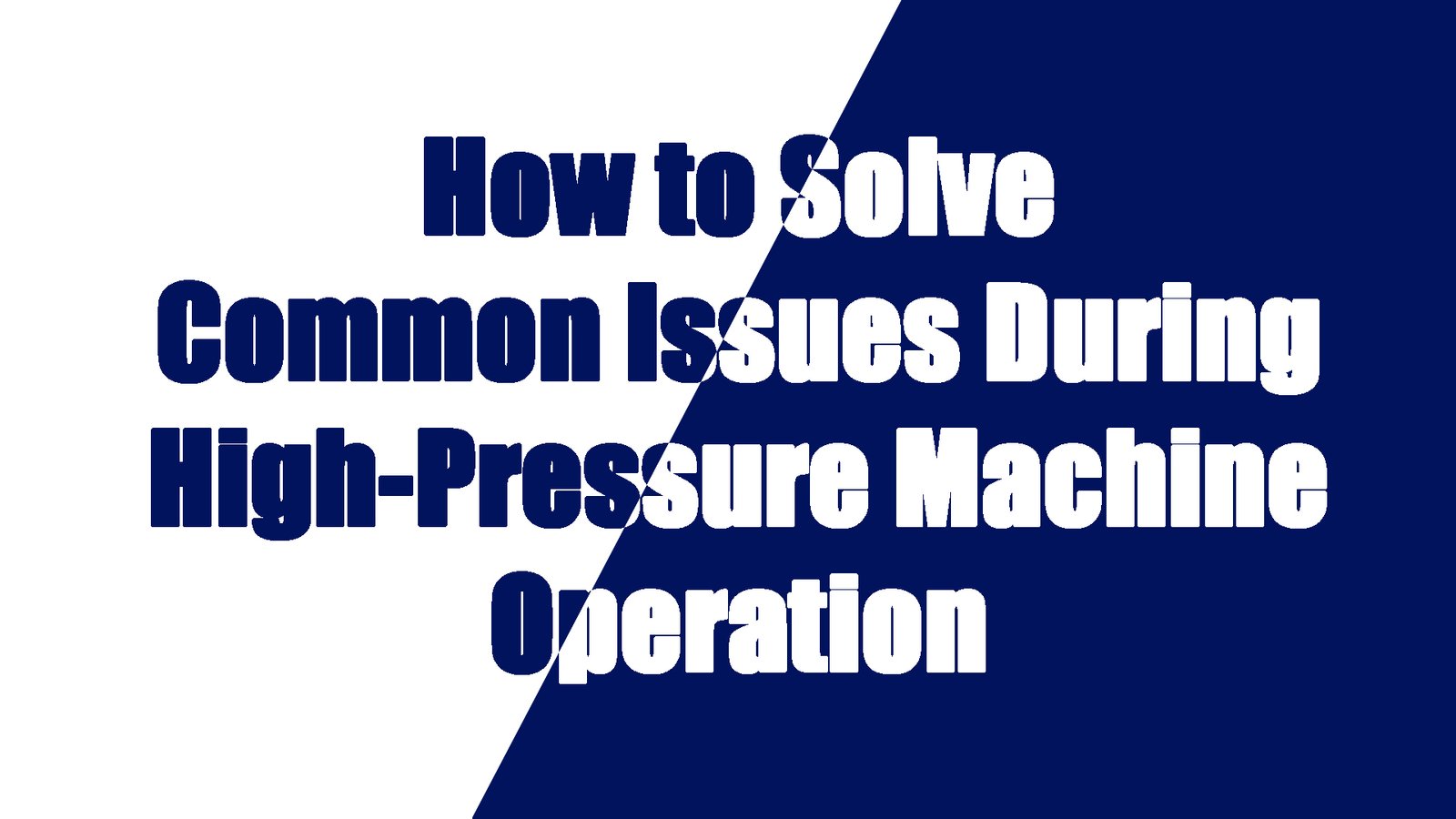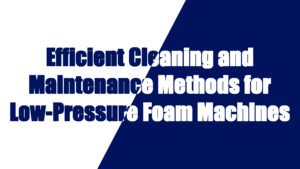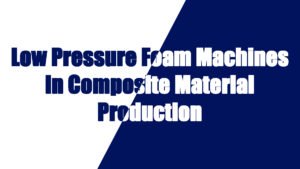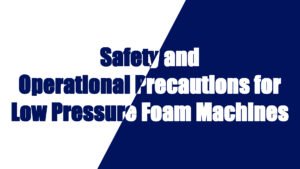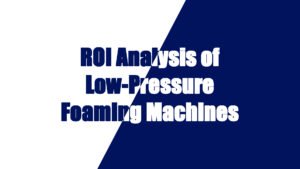High-pressure machines play a critical role in various industrial applications, especially in the production of polyurethane foams, coatings, and other materials. However, like any complex machinery, high-pressure machines can experience various operational issues that affect production efficiency, product quality, and even lead to equipment breakdowns if not addressed promptly. This article provides a detailed list of common issues encountered during high-pressure machine operation, along with comprehensive solutions and best practices for preventing and troubleshooting these problems.
Uneven Mixing
Cause:
Uneven mixing is one of the most common issues in high-pressure PU foam machines, especially during polyurethane foam production. Improper mixing of components A and B can result in inconsistent foam density, poor strength, and even visual defects. Common causes include:
- Poor mixer design: Inadequate shear force in the mixing head can result in insufficient mixing of components.
- Flow imbalance: Imbalanced flow rates of components A and B can lead to improper mixing ratios.
- Clogged or damaged mixing head: Blockages or wear in the mixing head nozzle can hinder effective mixing.
- Material quality issues: Impurities or instability in the raw materials can affect mixing uniformity.
Solution:
- Clean the mixing head: Regularly clean the mixing head to remove residue and impurities. Thorough cleaning should be done after every material change, especially after several uses.
- Adjust flow settings: Ensure balanced flow rates of components A and B. Use flow control valves and pressure control systems to maintain accurate flow ratios.
- Replace or repair the mixing head: If the mixing head shows signs of wear or blockage, replace or repair it. Opt for high-shear mixing heads to enhance mixing efficiency.
- Optimize raw material formulations: Use high-quality materials with consistent viscosity and flow properties to reduce mixing difficulty.
Case Study:
A seat manufacturer in the automotive industry faced foam quality issues due to uneven hardness. Upon investigation, it was found that the mixing head was clogged. After cleaning the mixing head and adjusting the flow rates of the components, the foam quality was stabilized.
Pipe Blockages
Cause:
Pipe blockages can severely affect the high-pressure machine’s performance, especially with higher viscosity materials. The common causes of pipe blockages include:
- Viscous materials: High-viscosity foaming materials can solidify inside pipes, causing blockages.
- Solid particles or contaminants: Particulates, dust, or impurities in the material can clog the pipes.
- Lack of regular cleaning: Without regular cleaning, accumulated residues and aged material can clog the pipes over time.
Solution:
- Regularly clean pipes: Clean the pipes at each material change to remove any residual material. Use high-pressure water or air cleaning systems to ensure thorough cleaning.
- Monitor material quality: Choose materials that do not contain solid particles. Avoid using materials that tend to clump or solidify.
- Install filtration systems: Place filters at the pipe entry points to catch contaminants and prevent them from entering the pipes.
- Inspect pipes regularly: Check the pipes for wear and damage. Ensure that there are no cracks or leaks, as these can lead to further issues.
Case Study:
A cold-chain customer experienced frequent pipe blockages during the production of insulation panels. After analyzing the problem, it was determined that the high-viscosity material was causing the blockages. By optimizing the material formulation and enhancing pipe cleaning procedures, the issue was resolved.
Low Pressure
Cause:
Low pressure can result in poor foam quality, inconsistent output, and even machine downtime. Common causes include:
- Pump failure or wear: A damaged or worn pump seal may prevent the machine from reaching the required pressure.
- Gas supply issues: Insufficient compressed air or gas supply can reduce the system’s pressure.
- Leaks in the pipes: Leaks in the pipes or fittings can cause a drop in pressure, leading to system inefficiency.
Solution:
- Inspect the pump system: Check the pump for damage or wear. If the seals or components are worn out, replace or repair them to ensure proper pressure output.
- Check the gas supply: Ensure that the compressed air or gas supply is stable and sufficient for the required pressure.
- Inspect pipe connections: Tighten or replace any loose or damaged pipe fittings to prevent leaks. Regular leak checks are essential to maintaining system pressure.
- Adjust pressure settings: Fine-tune the pressure settings to ensure optimal working pressure. Too low of a pressure can affect foam quality, while too high of a pressure can damage the equipment.
Case Study:
An appliance manufacturer reported low-pressure issues during foam production. The investigation revealed that the compressor was not supplying adequate pressure. After addressing the compressor issue and recalibrating the pressure settings, the production line returned to normal, and foam quality improved.
Overheating
Cause:
Overheating can affect the performance of high-pressure machines, causing parts to wear out faster and potentially leading to system failure. Common causes include:
- Cooling system failure: If the cooling system (e.g., fans, heat exchangers) is malfunctioning, the machine may overheat.
- High ambient temperature: Excessive room temperature can hinder the machine’s cooling capabilities.
- Electrical overload: Overloading the electrical system can lead to overheating of components.
Solution:
- Check the cooling system: Regularly inspect the cooling system components (fans, heat exchangers, coolant levels) to ensure they are working properly. Clean any debris from the cooling system to improve airflow.
- Monitor ambient temperature: Ensure that the temperature of the working environment is controlled. High room temperatures can impair the cooling system’s efficiency.
- Monitor electrical load: Check the electrical load on the system. Avoid running the system above its rated capacity for prolonged periods.
Case Study:
A foam manufacturer faced overheating issues during the summer months, which caused system instability. Upon inspection, the cooling fans were found to be clogged. After cleaning the cooling fans and adjusting the temperature settings, the issue was resolved.
Material Leaks
Cause:
Leaks in a high-pressure machine can result in material wastage, product quality issues, and safety concerns. Leaks typically occur at the seals, pipe connections, or mixing heads. The common causes include:
- Worn seals: Over time, seals can deteriorate, allowing material to leak.
- Loose connections: Improperly tightened pipe connections can lead to leaks.
- Insufficient lubrication: Lack of proper lubrication on the moving parts can lead to leakage.
Solution:
- Inspect seals: Regularly check the condition of seals, including O-rings and gaskets, and replace them if they show signs of wear or aging.
- Tighten connections: Ensure that all pipe connections are securely fastened and there are no gaps in the seals. Regularly check for leaks at connection points.
- Lubricate moving parts: Maintain proper lubrication on the equipment’s moving parts to prevent leaks and ensure smooth operation.
Case Study:
A client in the automotive industry experienced leakage during the production of foam seat cushions. After checking the seals and tightening the connections, the leakage problem was resolved, and production returned to normal.
The Importance of Preventive Maintenance
Preventive maintenance is essential to ensure that high-pressure machines continue to operate at peak efficiency. By performing regular inspections and maintenance, you can catch potential issues early, reduce the likelihood of equipment breakdowns, and increase overall productivity. A well-maintained machine is more likely to produce consistent, high-quality products and last longer, ultimately saving on repair costs and downtime.
High-Pressure Machine Maintenance Checklist
| Inspection Item | Action | Frequency | Purpose |
| Mixing Head Inspection | Clean the mixing head, check for wear, adjust flow settings | Daily | Ensure uniform mixing |
| Pipe Inspection | Inspect for blockages, clean filters | Weekly | Prevent blockages |
| Pressure Settings Check | Check pump pressure and flow settings, ensure proper pressure | Monthly | Maintain stable pressure |
| Cooling System Inspection | Check fans, heat exchangers, and coolant levels | Quarterly | Prevent overheating |
| Seal Inspection | Check seals and O-rings for wear and leaks | Monthly | Prevent leaks |
| Lubrication Check | Check and refill lubrication system | Monthly | Ensure proper lubrication |
| Electrical System Check | Inspect electrical components, ensure no overloads | Quarterly | Prevent electrical failure |


















